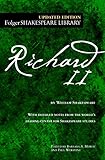

 “To be or not to be, ay there’s the point.” Wait, that’s not how the line goes! And yet, this is Shakespeare, too. It’s Hamlet,
“To be or not to be, ay there’s the point.” Wait, that’s not how the line goes! And yet, this is Shakespeare, too. It’s Hamlet, but not as we know it. Not quite, anyway. Few Bard groupies realize that there are, in fact, three distinctly different versions of Shakespeare’s most famous play. Fewer still know why. And Hamlet’s not the only play with alternative texts floating around the drama universe. In fact, some of Shakespeare’s most beloved plays like Romeo and Juliet or King Lear exist in shockingly different versions, printed as individual texts during his lifetime or as a collected edition shortly after his death. So, which were Shakespeare’s originals? The faster-paced, less knotty individual plays or the longer stately speech-laden versions of the collected edition? The truth is, we cannot tell. Except for three pages, there is not a single manuscript of Shakespeare’s prolific writing career that survives, no diary entry, no legal dispute, no recorded conversation that tells us this is it. But we don’t have to despair—what we do have is plenty and more to explore the bard in the context of his time, and our own notions of what makes great literature.
but not as we know it. Not quite, anyway. Few Bard groupies realize that there are, in fact, three distinctly different versions of Shakespeare’s most famous play. Fewer still know why. And Hamlet’s not the only play with alternative texts floating around the drama universe. In fact, some of Shakespeare’s most beloved plays like Romeo and Juliet or King Lear exist in shockingly different versions, printed as individual texts during his lifetime or as a collected edition shortly after his death. So, which were Shakespeare’s originals? The faster-paced, less knotty individual plays or the longer stately speech-laden versions of the collected edition? The truth is, we cannot tell. Except for three pages, there is not a single manuscript of Shakespeare’s prolific writing career that survives, no diary entry, no legal dispute, no recorded conversation that tells us this is it. But we don’t have to despair—what we do have is plenty and more to explore the bard in the context of his time, and our own notions of what makes great literature.
But first, let’s review the facts of Shakespeare’s life, which fit on a commercial postcard. He was born in 1564 in a smallish town in Warwickshire, England; his family wasn’t rich, but had enough money to send him to the local high school; when he was only 18, he married Anne Hathaway, a woman six years his senior, because she was pregnant; they had three children, one of whom (Hamnet) will die as a child; at some point, Shakespeare appeared in London, first as actor, then as playwright, then as share-holder in the Globe Theatre venture. He wasn’t one to be fooled: Someone owes him money, and he threatens legal consequences; he’s socially ambitious, and buys his family a title of the lower gentry; he’s financially shrewd, and acquires the best house in his home-town where he’ll retire to; he doesn’t care how he spells his own name, changing his signature several times throughout his life; he bequeaths his wife the second-best bed (which, it is said, is their marriage bed, also being the most comfortable most lain-in bed). He dies in 1616, aged 52.
 That’s about all we know based on legal documents like baptisms and property records. We don’t have diaries, or rough drafts of plays, or letter correspondences, or notes in the margins of his favorite books. We don’t really know how Shakespeare worked. All that we have are his texts, giving us clues about the man and his life on the wrong side of the river Thames, the shady amusement district Southwark, now at the heart of the city of London. All we can do is read Shakespeare’s plays and poems, and draw educated guesses about his meanings, intentions, work habits, and work environment. And no book is more important in this endeavor than the so-called Folio, whose 400th anniversary Shakespeare lovers are celebrating this year.
That’s about all we know based on legal documents like baptisms and property records. We don’t have diaries, or rough drafts of plays, or letter correspondences, or notes in the margins of his favorite books. We don’t really know how Shakespeare worked. All that we have are his texts, giving us clues about the man and his life on the wrong side of the river Thames, the shady amusement district Southwark, now at the heart of the city of London. All we can do is read Shakespeare’s plays and poems, and draw educated guesses about his meanings, intentions, work habits, and work environment. And no book is more important in this endeavor than the so-called Folio, whose 400th anniversary Shakespeare lovers are celebrating this year.
Size Matters
In the Renaissance, books of several sizes were on the market, ranging from extremely small (around thumb-size) to extremely big (bigger than an atlas today). Most books, however, were cheap disposable things in “quarto” format, something like the affordable paperback of today: the text was printed on a double-sided sheet of paper folded twice, creating four leaves (hence the name), and eight pages that were stitched together, and sold without pricy binding. Readers would stroll through book-seller alleys or halls, take their pick, and (if they really wanted to keep a favorite consortium of pamphlets) would have a company of texts bound together in leather for safe-keeping. If this wasn’t done, the coverless book was vulnerable to disintegration: brittle paper-quality, damp English weather, lack of binding, frequent thumbing, circulating among friends, and re-using pages for something else (notably as toilet paper) means that we have lost a staggering amount of printed material from the past, and Shakespeare’s plays are no exception. His dramas had been printed since 1594 as quartos, but few of them have survived. Luckily, though, Shakespeare had good friends who would make sure his legacy would continue.
During Shakespeare’s lifetime, 17 of his plays were printed as quartos with varying degrees of textual quality, one play at a time. After his death in 1616, the printers John Heminges and Henry Condell started gathering together as many plays as they could, both printed and, presumably, handwritten texts. They were also actors and shareholders in Shakespeare’s old acting company, and they were his friends (he left them money for memorial rings in his will). The collected works was published by a syndicate of printers, publishers, actors, and company shareholders in order to pool expertise and spread costs: together they produced a monumental volume in Folio format, that is, a lush high-quality book made of sheets folded only once (rather than twice for the quarto).
The larger-sized book carried great prestige and signaled care in production and cost on the market. Usually, Folios were the prerogative of weighty subjects like classical literature, history, geography, or theology, not such frivolous pastimes as plays. In 1616, Shakespeare’s friend and fellow playwright Ben Jonson was roasted for publishing his collected works, but by 1623, attitudes had changed. A Folio book was now an honor an author like Shakespeare was worthy of. It was sturdy, and expensive (it would cost around $200 today), and it enshrined Shakespeare’s canonical status for the future.
The Making of Shakespeare
 Except for a few signatures, and three pages Shakespeare contributed to the collectively-authored play Sir Thomas More, no manuscript of his poems or plays has survived. We have no evidence beyond the printed texts of how he worked or how involved he was in printing his work, or indeed whether he was interested in seeing it published in the first place. After all, Shakespeare was a man of the theater, and perhaps it was enough for him to write for the stage. Perhaps his sense of business meant passing his papers onto printers with as little personal input as possible beyond collecting payment (much unlike Ben Jonson who ushered his texts into print like a detail-obsessed micro-managing bureaucrat).
Except for a few signatures, and three pages Shakespeare contributed to the collectively-authored play Sir Thomas More, no manuscript of his poems or plays has survived. We have no evidence beyond the printed texts of how he worked or how involved he was in printing his work, or indeed whether he was interested in seeing it published in the first place. After all, Shakespeare was a man of the theater, and perhaps it was enough for him to write for the stage. Perhaps his sense of business meant passing his papers onto printers with as little personal input as possible beyond collecting payment (much unlike Ben Jonson who ushered his texts into print like a detail-obsessed micro-managing bureaucrat).
All we can say about Shakespeare’s writing process, his motivations, and the relationships between differing versions of identical plays is conjecture. Evidence is sparse and includes substantially varying versions in the Quartos and the Folio of beloved plays like Romeo and Juliet, King Lear, or Hamlet. Take the Danish Prince’s musings on life after death, and the impossibility of knowing for sure. The Folio reads in the way we have grown familiar with:
To be, or not to be, that is the question:
Whether ’tis nobler in the mind to suffer
The slings and arrows of outrageous fortune,
Or to take arms against a sea of troubles,
And by opposing end them: to die, to sleep
No more
Compare this to the first Hamlet Quarto 20 years prior to the Folio:
To be, or not to be; ay, there’s the point.
To die, to sleep—is that all? Ay, all.
No, to sleep, to dream—ay, marry, there it goes
That’s a lot of ay-ing for the highly eloquent skeptical prince! Would we have come to be enthralled by the play quite as much had we only had the Quarto at our disposal? Ay, that is the question.
 The Folio versions tend to be longer, rhetorically knottier, more reflective, and altogether more static than their Quarto equivalents. Scholars have called some Quartos like the Hamlet of 1603 or 1594 Taming of a Shrew (note well, not the Shrew) “foul papers,” suggesting they were rough drafts or messy theater texts that somehow found their way to the printer, or indeed memorial reconstructions by actors trying to make an illegal buck on the side by regurgitating whatever they remembered. Other scholars argue for originally long texts (which somehow reached the Folio collectors) that Shakespeare himself, or a highly-knowledgeable theater-person, reduced into shorter snappier playhouse versions.
The Folio versions tend to be longer, rhetorically knottier, more reflective, and altogether more static than their Quarto equivalents. Scholars have called some Quartos like the Hamlet of 1603 or 1594 Taming of a Shrew (note well, not the Shrew) “foul papers,” suggesting they were rough drafts or messy theater texts that somehow found their way to the printer, or indeed memorial reconstructions by actors trying to make an illegal buck on the side by regurgitating whatever they remembered. Other scholars argue for originally long texts (which somehow reached the Folio collectors) that Shakespeare himself, or a highly-knowledgeable theater-person, reduced into shorter snappier playhouse versions.



 Whichever way the Folio came to be, it’s crucial for preserving Shakespeare’s inestimable plays, as well as turning him into the cultural icon he had become by the end of the 17th century: of the 36 plays ascribed to Shakespeare, 18 are not known to have been published before, including such favorites as Macbeth, The Tempest, As You Like It, Antony and Cleopatra, and The Winter’s Tale. Just imagine we’d have lost such hilarious gender-bender stories like As You Like It, or such poetry as “oh, brave new world” from The Tempest! Some conjectured Shakespeare plays like Love’s Labour’s Won or Cardenio (if they existed) are probably lost to the sad fate of most Renaissance literature that was never printed or bound: fragmentation, disintegration, repulping into new paper. But the magisterial Folio also shaped Shakespeare for us in other ways than textual rescue.
Whichever way the Folio came to be, it’s crucial for preserving Shakespeare’s inestimable plays, as well as turning him into the cultural icon he had become by the end of the 17th century: of the 36 plays ascribed to Shakespeare, 18 are not known to have been published before, including such favorites as Macbeth, The Tempest, As You Like It, Antony and Cleopatra, and The Winter’s Tale. Just imagine we’d have lost such hilarious gender-bender stories like As You Like It, or such poetry as “oh, brave new world” from The Tempest! Some conjectured Shakespeare plays like Love’s Labour’s Won or Cardenio (if they existed) are probably lost to the sad fate of most Renaissance literature that was never printed or bound: fragmentation, disintegration, repulping into new paper. But the magisterial Folio also shaped Shakespeare for us in other ways than textual rescue.
One Book to Rule Them All: The Afterlives of William S.


 The Folio is the lifeboat of Shakespeare’s works, buoying up his prestige for future generations, yet it also influences how we have been interpreting the playwright for 400 years: The very title, Mr. William Shakespeare’s Comedies, Histories & Tragedies, impacts our understanding, offering genre divisions that are not as clear-cut as they seem. The table of contents chooses what play is what, bunching more straightforward comedies like Much Ado About Nothing together with less obvious ones like The Merchant of Venice (Shylock doesn’t seem particularly happy or socially integrated at the end of the play). The history play King Richard II is just as tragic as Macbeth is historical. Generic categories are potent straightjackets, filtering interpretation through preconceived glasses. It’s difficult for a play to escape that corset.
The Folio is the lifeboat of Shakespeare’s works, buoying up his prestige for future generations, yet it also influences how we have been interpreting the playwright for 400 years: The very title, Mr. William Shakespeare’s Comedies, Histories & Tragedies, impacts our understanding, offering genre divisions that are not as clear-cut as they seem. The table of contents chooses what play is what, bunching more straightforward comedies like Much Ado About Nothing together with less obvious ones like The Merchant of Venice (Shylock doesn’t seem particularly happy or socially integrated at the end of the play). The history play King Richard II is just as tragic as Macbeth is historical. Generic categories are potent straightjackets, filtering interpretation through preconceived glasses. It’s difficult for a play to escape that corset.
In a business-savvy move, the printing consortium put a more recent play at the head of each generic section, offering a sequence of play arrangement that impacts the relationships of works to one another in the same way that neighboring paintings in a museum evoke connections owing to their proximity. The Folio also gives us a list of actors, including Shakespeare himself, whose names are thus forever enshrined together with his precious works. And it also sketches Shakespeare’s face for us.
There are no contemporary likenesses of Shakespeare. The Folio engraving by Martin Droeshout is the first and, perhaps, most authentic portrait, since it was endorsed by the group of friends who knew Shakespeare and who had more than an economic stake in the book. That high slightly balding forehead, that mustache, and thoughtful expression have burned themselves into our collective consciousness as “Shakespeare,” iterated ad infinitum on book covers and cheeky memes (we all came across a be-ruffed William with pixelated deal-with-it-sunglasses on the internet). The Folio is our gateway to Shakespeare and Renaissance drama, and no mistake. And yet it also tells us cautionary tales of our future if we don’t take care now.
The Once and Future Folio: The Book in the 21st Century
Considering the shelves of academic volumes on Shakespeare and the Folio, one might think we know all there is to know, but that’s not so. The jury is still out over which kinds of texts went into the book, and how far they can be assumed to be authorial. Scholars have reconstructed the mechanical process of producing the Folio, and have concluded that there must have been five compositors, setting the type for the book, one of them probably the apprentice Ralph Crane based on peculiarities of spelling, punctuation, and the high level of specific stage directions (he was probably an avid theatergoer and remembered the productions when setting the words into the wooden stick for printing).
Apart from certain nuts and bolts we understood, there’s still mystery enshrouding the Folio, and the Renaissance printing trade itself: Did the typesetters each have a manuscript copy to work from, peeping at text as they were picking individual letters? What if they weren’t able to read the handwriting? Or would someone have read the text out for faster setting? What if letters or punctuation marks were used up, but the page wasn’t ready to be printed yet? What if there was too much white space, or too little? After all, it’s only with the arrival of the typewriter and personal computer that we have seemingly unlimited text supply, and a computerized system calculating margins, paragraphs, and letter relationships for us. The Folio still bears secrets concerning the how of book production at the height of literary activity during the English Renaissance.
Take, for example, the last lines of Juliet before she follows her lover into final union in death: “O happy Dagger / This is thy sheath, there rust, and let me die.” This is a conflated version of the Folio and the second Quarto publication of 1599. The first Quarto two years earlier, however, reads “rest.” Which is it then? Rest or rust? Both trigger exciting metaphors of blood-stained decay (“rust”), and final peace (“rest”), apart from the sexual allusion to Juliet’s chest becoming the “sheath” to Romeo’s “dagger.” If both versions seem to work nicely, which do we pick? Do we have to pick one? Which is authorial? Does it even matter?
Shakespeare’s Folio, just as any old book (and new one for that matter), is a collaboration before it is anything else. No decision has been taken by a single person, least of all by the author themselves. There’s no such thing as the one and only correct word. There are only versions, all of them worthy of investigation in their own right. Contingency, expediency, trial-and-error, and simple chance ruled the process of production as much as (or perhaps more than) conscious choice and eye for precision. Shakespeare was not the lone genius we often imagine him to be, locked away in an attic, writing his fingers raw. He was part of a community of friends and colleagues, who experimented with the possibilities of drama and technology, who took pragmatic decisions which later come to seem like deliberate choices, and who wanted to make art even as they wanted to make money. The Folio dethrones the author, and puts them firmly back where they have always been: among a flat hierarchy of equals, thinking and feeling and making together.
[the_millions]
























































